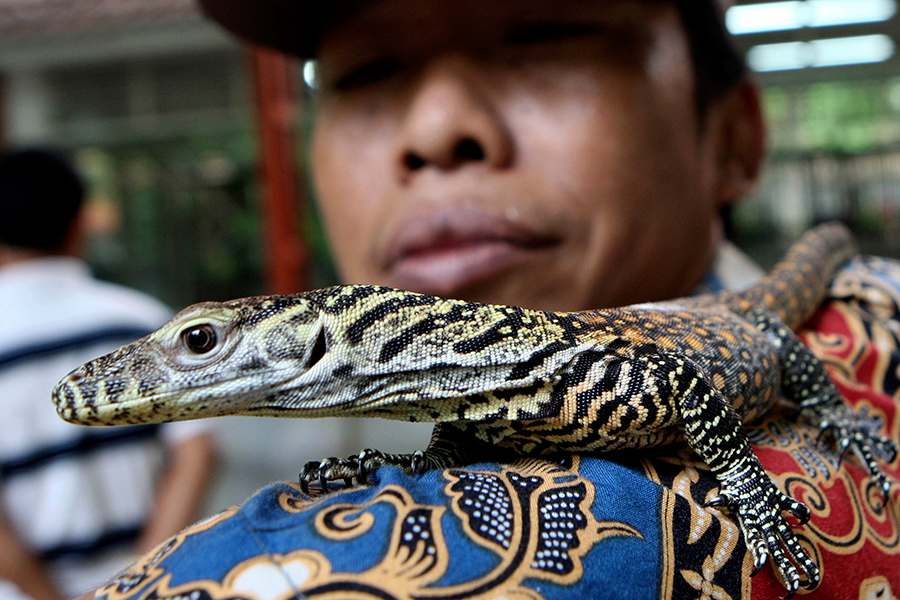Why did the Komodo dragon survive?
Loading...
Today, Google honors the Komodo dragon in its latest Google Doodle – the shifting shape of its logo that celebrates all manner of things, from holidays and anniversaries to artists, pioneers, and scientists. And legendary animals.
The Komodo dragon is the world’s largest living lizard – stretching to some eight feet in length – and survives only on a handful of Indonesian islands. Yet, while many large animals both in Indonesia and other parts of the world are suffering a slide toward extinction, the Komodo dragon’s story reads differently: Conservation efforts to preserve this giant lizard are proving remarkably successful.
Can the Komodo dragon's success provide a blueprint for other big beasts, a roadmap to survival?
As Achmad Ariefiandy, an Indonesian expert on Komodos with the Komodo Dragon Survivor Program, explained to environment and wildlife publication Mongabay, one of the keys to this creature’s survival has been the establishment of Komodo National Park, a UNESCO world heritage site. In fact, Google is celebrating the 37th anniversary of this park's creation.
Within the preserve, which holds most of the wild Komodo dragon population, conservation biologists have focused on protecting not only the dragons themselves but also their habitat and their prey, as well as educating and working with local communities. And while the islands draw tourists from all over the globe, the adverse effects of that intrusion are limited because a mere 10 percent of the national park is open to visitors.
While this multi-faceted approach certainly holds lessons for other conservation efforts, there are also some unique characteristics about both the Komodo dragons and their circumstances.
For one, their sharply limited geography actually helps efforts to preserve them. Such distinct borders to their territory create a natural barrier to various forms of encroachment and a clear definition to the areas being preserved. Of course, living on only a few islands also brings challenges, not least the inhibition of substantial population growth.
But these lizards are also resilient, able to withstand harsh environmental conditions. They can smell carrion from as far away as 2.5 miles, and will spend hours in a single spot, waiting for prey to wander by.
Scientists believe that the Komodo dragon used to inhabit a range far larger than its present-day confinement. In fact, the discovery of fossils from between 300,000 and 4 million years ago in Australia indicate they may have originated in the land down under.
And when the Komodos lived in Australia, they did not hold the title of “largest lizard.” They were outdone by the 16-foot-long Megalania, extinct for the past 40,000 years.
Just why the Komodo dragon has survived, and other giant lizards did not, is an open question. But most experts agree that the precipitous decline in numbers of the Komodo, to today’s total wild population of somewhere between 3,000 and 5,000, is the fault of humans. Researchers are keen to dig deeper into these historical trends, hoping they could provide insights into future prospects.
"Understanding the past history of a species is absolutely fundamental to determining its potential trajectory in the future, its responses to climate change, habitat change and extinction events," Scott Hocknull, a vertebrate paleontologist at the Queensland Museum in Australia, told LiveScience.
"The Komodo dragon's fossil record shows that it is a resilient species," he said, "surviving extinction events which wiped out contemporary megafauna species."








